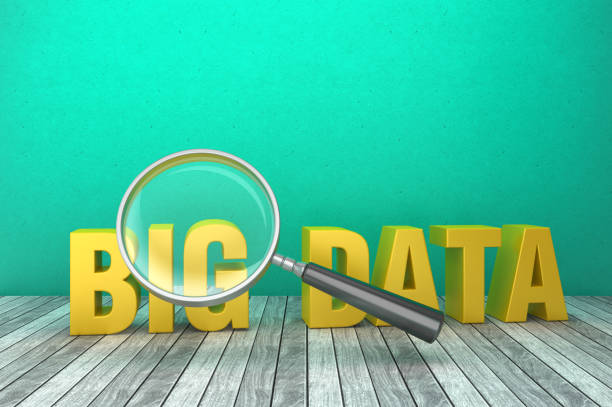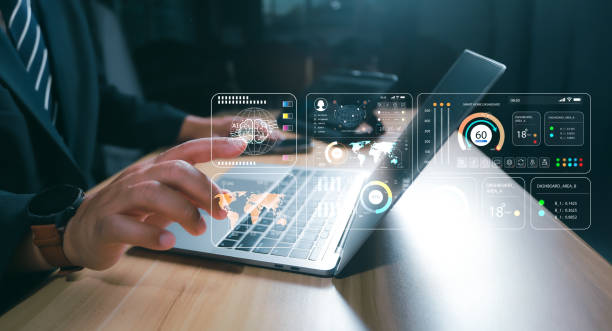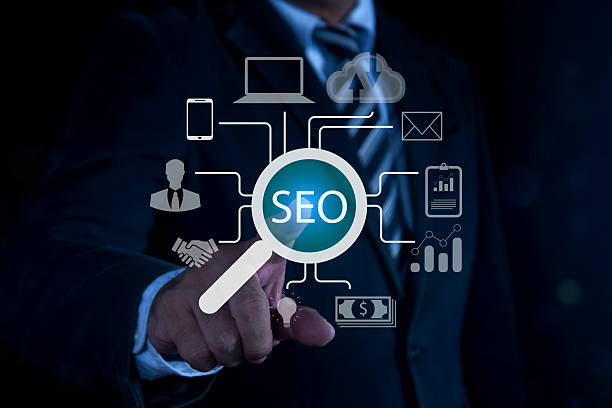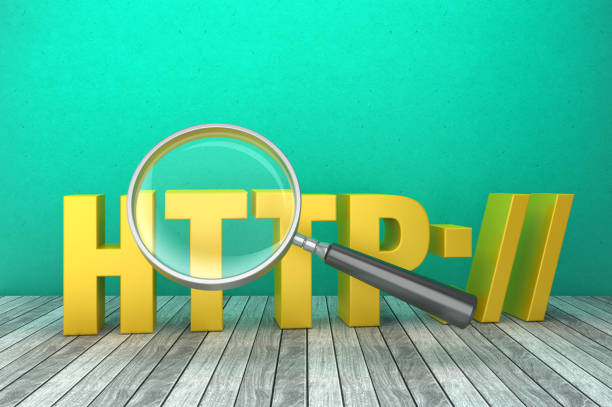What is On-Page SEO and Why is it Important?
![]()
On-Page SEO refers to a set of actions you perform within your website to improve your site’s ranking in search engines like Google.
These actions include optimizing content, site structure, HTML tags, and other factors related to your website.
The importance of On-Page SEO lies in its ability to help search engines better understand your site’s content and display it to users in search results.
If we consider #Off-Page SEO, such as earning credibility and link-building on other websites like Wikipedia, as marketing and advertising, then On-Page SEO is like tidying up and making a store’s display window attractive.
The more attractive the store’s display window, the more customers it attracts.
Similarly, the better your website’s On-Page SEO, the more search engines trust your site and improve its ranking in search results.
On-Page SEO is an ongoing process that requires continuous review and updates.
By properly implementing On-Page SEO, you can increase your site’s organic traffic, attract more audiences, and ultimately achieve your business goals.
On-Page SEO is necessary for all websites and is used across all platforms.
Does your current website reflect your brand’s credibility as it should? Or does it drive away potential customers?
Rasawob, with years of experience in designing professional corporate websites, is your comprehensive solution.
✅ A modern, beautiful website tailored to your brand identity
✅ Significant increase in lead generation and new customers
⚡ Contact Rasawob now for a free consultation on corporate website design!
Keyword Research and Finding the Best Ones

Keyword research is one of the most important stages of On-Page SEO.
By using various tools such as Ahrefs, Moz Keyword Explorer, and Google Keyword Planner, you can find the words that users employ in search engines to find information related to your business.
Choosing appropriate keywords has a significant impact on your site’s traffic.
After finding keywords, you should categorize them based on search volume, competition, and relevance to your business.
Generally, it is better to choose keywords with high search volume and less competition.
Also, ensure that the selected keywords are relevant to your site’s content and meet user needs.
Long-tail keywords are longer and more specific search phrases that usually have lower search volume but higher conversion rates.
Using long-tail keywords can help you attract a more targeted audience and improve your site’s ranking in search results.
Optimizing Titles and Meta Descriptions

Title Tags and Meta Descriptions are two important elements in On-Page SEO that are displayed in search results.
Titles should be attractive, relevant to the content, and contain primary keywords.
Meta descriptions should also provide a summary of the page’s content and encourage users to click on your site’s link.
Try to keep the length of titles between 50 and 60 characters and meta descriptions between 150 and 160 characters.
Titles and meta descriptions help search engines understand the topic of your page and display it to relevant users.
Therefore, optimizing them can have a positive impact on your site’s ranking in search results.
When writing titles and meta descriptions, use an attractive and persuasive tone.
Try to use words like “Free,” “Best,” “Comprehensive Guide,” etc., to encourage users to click on your site’s link.
| Element | Description | Example |
|---|---|---|
| Title (Title Tag) | The page title displayed in search results. | Comprehensive On-Page SEO Guide – Site Name |
| Meta Description | A summary of the page content displayed in search results. | On this page, learn the principles of On-Page SEO and improve your site’s ranking on Google. |
Optimizing Website URL Structure

Your website’s URL structure plays a significant role in On-Page SEO.
URLs should be short, readable, and contain keywords.
Using long and complex URLs can confuse search engines and users.
It is better to use hyphens (-) instead of spaces ( ) in URLs.
Also, try to design your site’s URL structure logically and hierarchically.
For example, if you have a page about “SEO training,” its URL could be “/blog/seo-training.”
This type of URL structure helps search engines better understand the relationship between different pages on your site.
The use of SSL (Secure Sockets Layer) for website security is a necessity today.
Google gives better rankings to websites that use SSL and considers them more secure.
Are you tired of your e-commerce website having visitors but no sales? Rasawob solves your main problem by designing professional e-commerce websites!
✅ Significant sales increase with targeted design
✅ Flawless user experience for your customers
⚡ Get a free consultation!
Optimizing Content for Search Engines and Users

Content is king! High-quality content relevant to user needs is one of the most important factors for your site’s ranking in search engines.
Try to produce content that is valuable, informative, and engaging.
Use keywords naturally in your text, but avoid keyword stuffing.
Present your content in an organized and structured manner.
Use subheadings (H2, H3, H4), lists, and images to break up the text.
This makes your content more readable and appealing to users.
Regular content updates are also very important.
Try to update your old content and add new information to it.
This makes search engines trust your site more and improves its ranking in search results.
On-Page SEO ensures that content is optimized for search engines and achieves a good ranking in search results.
Image Optimization

Images play an important role in the attractiveness and user engagement with your site.
By optimizing images, you can reduce their size, increase page loading speed, and improve your site’s ranking in search engines.
Use appropriate image formats such as JPEG, PNG, and WebP.
Also, use Alt tags to describe images.
Alt tags help search engines understand image content and display them in search results.
Alt tags should be short, relevant to the image, and contain keywords.
For example: “Alt tag=”An example of image optimization for SEO””
Optimize image file names as well.
Use meaningful names relevant to the image content.
For example, instead of using a name like “IMG_1234.jpg,” use a name like “seo-image-optimization.jpg.”
On-Page SEO is not limited to text; it also includes images.
Improving Website Loading Speed

Website loading speed is one of the important factors in user experience (UX) and site ranking in search engines.
Users expect your site pages to load in less than 3 seconds.
If your site’s loading speed is low, users will leave your site, which will have a negative impact on your site’s ranking.
To improve site loading speed, you can use various methods such as image optimization, reducing the size of CSS and JavaScript files, using a CDN (Content Delivery Network), and enabling Gzip compression.
You can also use tools like Google PageSpeed Insights to check your site’s loading speed and identify issues.
| Factor | Description |
|---|---|
| Image Optimization | Reducing image size without losing quality |
| File Size Reduction | Compressing CSS and JavaScript files |
| Using CDN | Distributing content across different servers for faster access |
Improving user experience can be enhanced with On-Page SEO.
Optimizing Website Responsiveness

Today, most users access the internet from mobile devices.
Therefore, it is essential that your site is optimized for various devices with different screen sizes.
A responsive site automatically adapts to the user’s device screen size and provides a good user experience.
Google gives better rankings to responsive websites and considers them more suitable for mobile devices.
If your site is not responsive, you may lose a lot of traffic and your site’s ranking in search results.
On-Page SEO for responsive websites is of high importance.
To test your site’s responsiveness, you can use Google’s Mobile-Friendly Test tool.
This tool shows you how your site appears on mobile devices and what issues it has.
Does your company’s website perform as befits your brand? In today’s competitive world, your website is your most important online tool. Rasawob, an expert in designing professional corporate websites, helps you to:
✅ Build customer credibility and trust
✅ Convert website visitors into customers
⚡ Get a free consultation!
Creating a Sitemap and robots.txt File

A sitemap is an XML file that contains a list of all pages on your site.
A sitemap helps search engines easily find and index your site’s pages.
The robots.txt file is a text file that tells search engines which pages on your site should not be indexed.
On-Page SEO will proceed correctly by creating a sitemap.
Creating a sitemap and robots.txt file is very important for On-Page SEO.
By creating these files, you can help search engines better understand your site and display it to relevant users in search results.
You can also use Google Search Console (Google Search Console).
Updating the sitemap after every change in site content is very important.
This informs search engines that your site’s content has changed and that they should re-index your site.
Internal Linking
![]()
Internal linking means creating links between different pages on your site.
Internal linking helps search engines better understand your site’s structure and identify its more important pages.
Additionally, internal linking helps users easily navigate your site and find the information they need.
In internal linking, use appropriate Anchor Texts.
Anchor Text is the text you click on to be directed to another page.
Anchor Text should be relevant to the destination page’s content and contain keywords.
For example, if you want to link to a page about “SEO training,” the Anchor Text could be “SEO training.”
On-Page SEO is meaningless without internal linking.
Avoid creating broken links.
Broken links lead to a poor user experience and can decrease your site’s ranking in search engines.
Regularly check your site’s links and fix any broken ones.
Ultimately, On-Page SEO leads to increased website traffic.
Frequently Asked Questions
| Row | Question | Answer |
|---|---|---|
| 1 | What is On-Page SEO? | On-Page SEO refers to a set of actions performed within a website (on its pages) to improve its ranking in search engine results. This includes optimizing content, site structure, and HTML codes. |
| 2 | Why is On-Page SEO important? | On-Page SEO helps search engines better understand page content and determine whether that page is relevant and valuable for user searches. This better understanding leads to higher rankings. |
| 3 | What is the first and most important step in On-Page SEO? | Keyword Research is the most important initial step. By finding appropriate keywords, targeted content relevant to user needs can be produced. |
| 4 | What is the role of the Title Tag in On-Page SEO? | The title tag is one of the most important ranking factors and should include the main keyword. This tag is displayed as the page title in search results and influences the click-through rate (CTR). |
| 5 | What is the importance of the Meta Description? | The meta description does not directly impact ranking, but by providing an attractive summary of the page content in search results, it can encourage users to click, thereby increasing the click-through rate (CTR). |
| 6 | Why is using headings (H1, H2, etc.) in content important? | Headings help structure content and improve readability for users and search engine crawlers. Using keywords in headings also helps search engines better understand the topic. |
| 7 | What does Image Optimization in On-Page SEO include? | It includes compressing images to reduce size, using descriptive and relevant file names, and filling the Alt tag (alternative text) with relevant keywords to help search engines understand the image content. |
| 8 | What is meant by Internal Linking in On-Page SEO? | Internal linking refers to creating links between different pages of a website. This helps distribute page authority (Link Equity), improve user experience, and assist search engine crawlers in discovering new pages. |
| 9 | Why is Page Speed important for On-Page SEO? | Page loading speed is a direct ranking factor and significantly impacts user experience. Slow pages can lead to an increased bounce rate and reduced user engagement. |
| 10 | What role does quality content play in On-Page SEO? | High-quality, comprehensive, unique, and valuable content for the user is the core of On-Page SEO. This content not only attracts and retains users but also sends positive signals to search engines, helping achieve better rankings. |
And other services of Rasa Web Advertising Agency in the field of advertising
- Smart Advertising Campaign: A specialized service for growth in SEO ranking improvement based on precise audience targeting.
- Smart Brand Identity: An innovative service for increasing campaign management through user experience customization.
- Smart Advertising Campaign: A fast and efficient solution for online growth focusing on intelligent data analysis.
- Smart Google Ads: A creative platform for improving customer behavior analysis with intelligent data analysis.
- Smart Conversion Rate Optimization: An innovative service for increasing click-through rates through Google Ads management.
And more than hundreds of other services in the field of internet advertising, advertising consultation, and organizational solutions.
Internet Advertising | Advertising Strategy | Advertorial
Resources
- Comprehensive On-Page SEO Guide
- Important On-Page SEO Tips for Websites
- Effective Factors in On-Page SEO
- On-Page SEO Checklist
? To reach the pinnacle in the digital world, trust Rasawob Afarin. By providing comprehensive digital marketing services, including multilingual website design, SEO, and targeted advertising, we introduce your business to a global audience and establish a powerful presence for you.
📍 Tehran, Mirdamad Street, next to Bank Markazi, Kazerun Jonubi Alley, Ramin Alley, No. 6



